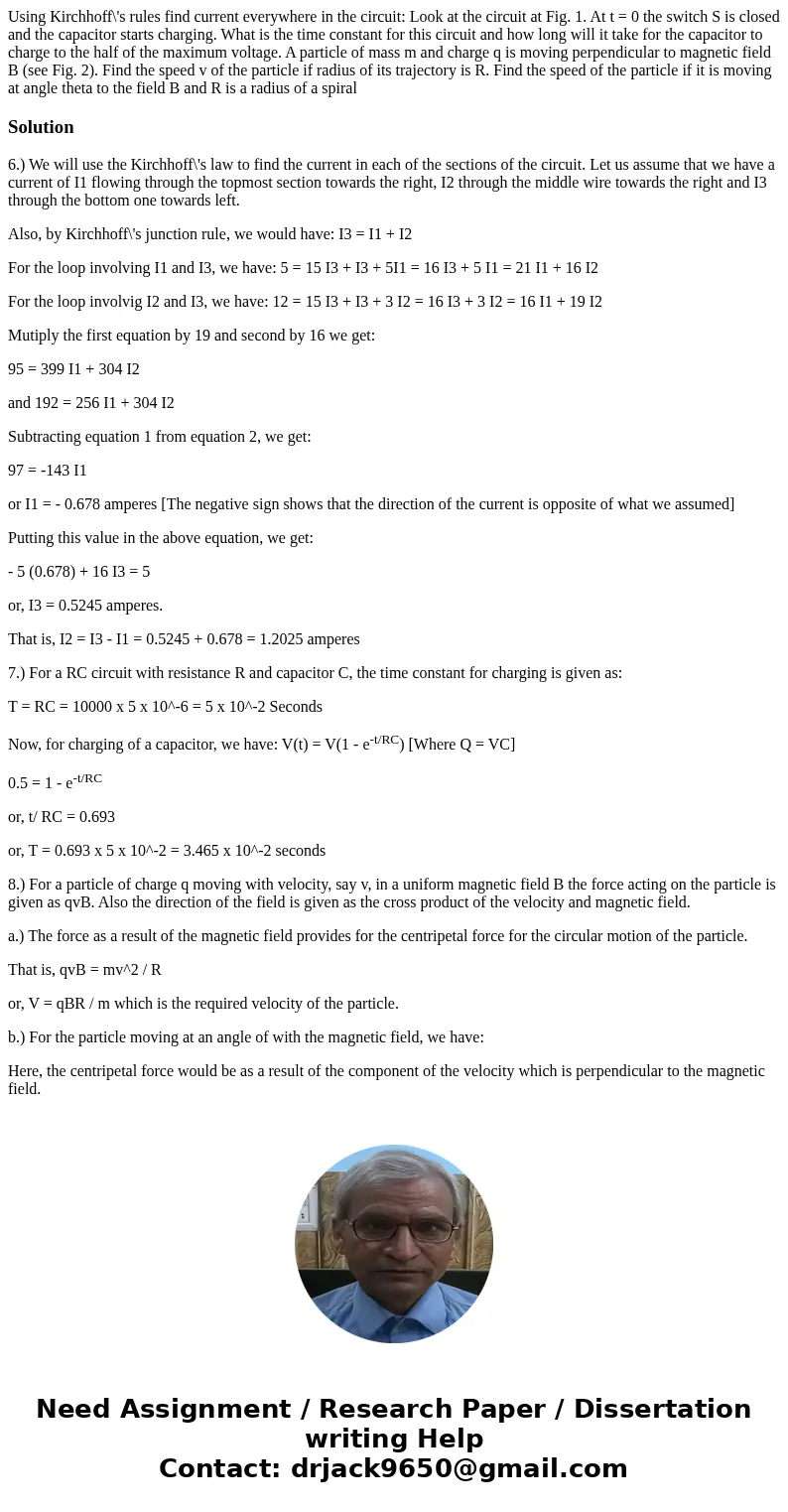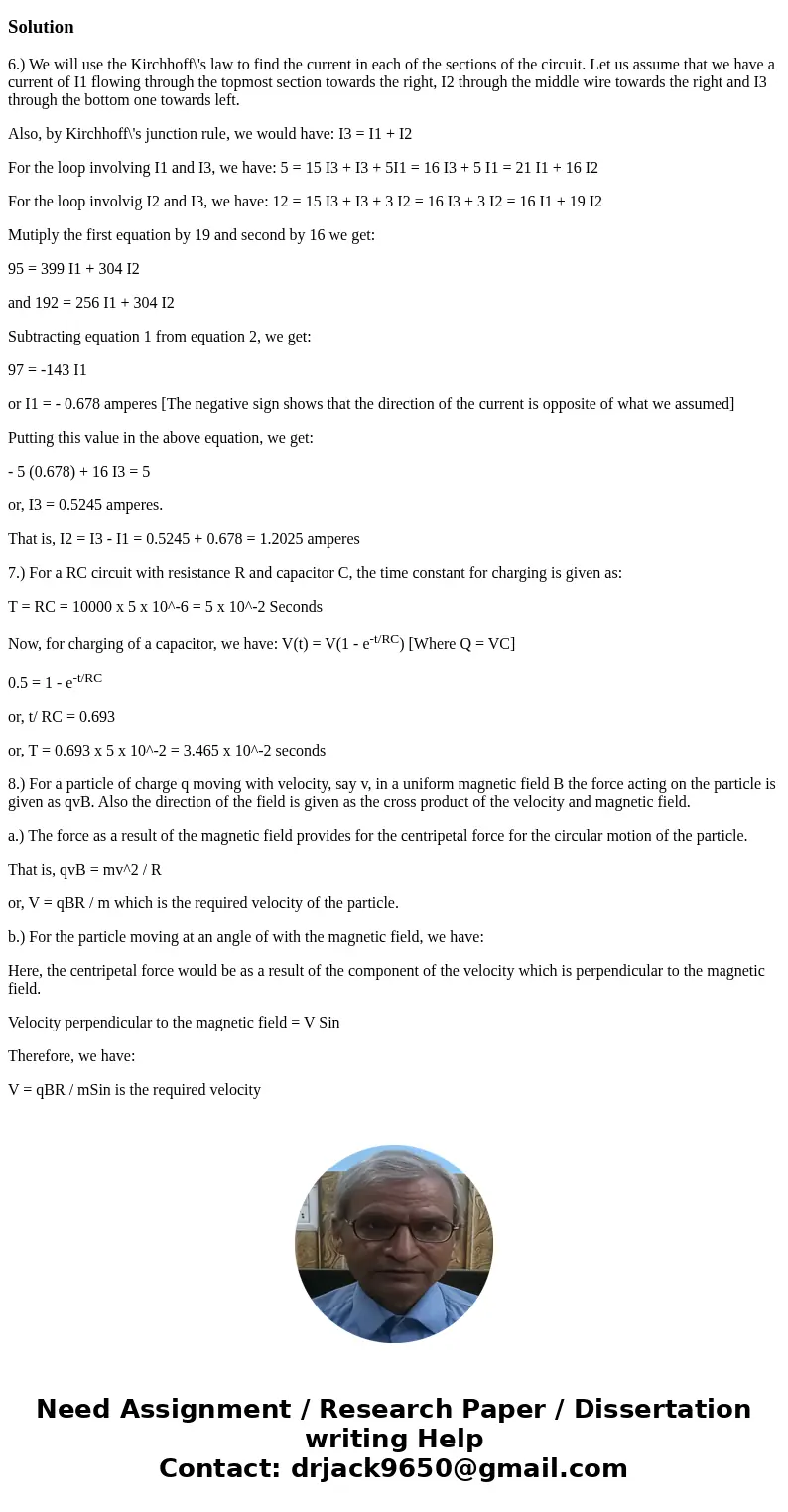Using Kirchhoffs rules find current everywhere in the circui
Solution
6.) We will use the Kirchhoff\'s law to find the current in each of the sections of the circuit. Let us assume that we have a current of I1 flowing through the topmost section towards the right, I2 through the middle wire towards the right and I3 through the bottom one towards left.
Also, by Kirchhoff\'s junction rule, we would have: I3 = I1 + I2
For the loop involving I1 and I3, we have: 5 = 15 I3 + I3 + 5I1 = 16 I3 + 5 I1 = 21 I1 + 16 I2
For the loop involvig I2 and I3, we have: 12 = 15 I3 + I3 + 3 I2 = 16 I3 + 3 I2 = 16 I1 + 19 I2
Mutiply the first equation by 19 and second by 16 we get:
95 = 399 I1 + 304 I2
and 192 = 256 I1 + 304 I2
Subtracting equation 1 from equation 2, we get:
97 = -143 I1
or I1 = - 0.678 amperes [The negative sign shows that the direction of the current is opposite of what we assumed]
Putting this value in the above equation, we get:
- 5 (0.678) + 16 I3 = 5
or, I3 = 0.5245 amperes.
That is, I2 = I3 - I1 = 0.5245 + 0.678 = 1.2025 amperes
7.) For a RC circuit with resistance R and capacitor C, the time constant for charging is given as:
T = RC = 10000 x 5 x 10^-6 = 5 x 10^-2 Seconds
Now, for charging of a capacitor, we have: V(t) = V(1 - e-t/RC) [Where Q = VC]
0.5 = 1 - e-t/RC
or, t/ RC = 0.693
or, T = 0.693 x 5 x 10^-2 = 3.465 x 10^-2 seconds
8.) For a particle of charge q moving with velocity, say v, in a uniform magnetic field B the force acting on the particle is given as qvB. Also the direction of the field is given as the cross product of the velocity and magnetic field.
a.) The force as a result of the magnetic field provides for the centripetal force for the circular motion of the particle.
That is, qvB = mv^2 / R
or, V = qBR / m which is the required velocity of the particle.
b.) For the particle moving at an angle of with the magnetic field, we have:
Here, the centripetal force would be as a result of the component of the velocity which is perpendicular to the magnetic field.
Velocity perpendicular to the magnetic field = V Sin
Therefore, we have:
V = qBR / mSin is the required velocity


 Homework Sourse
Homework Sourse